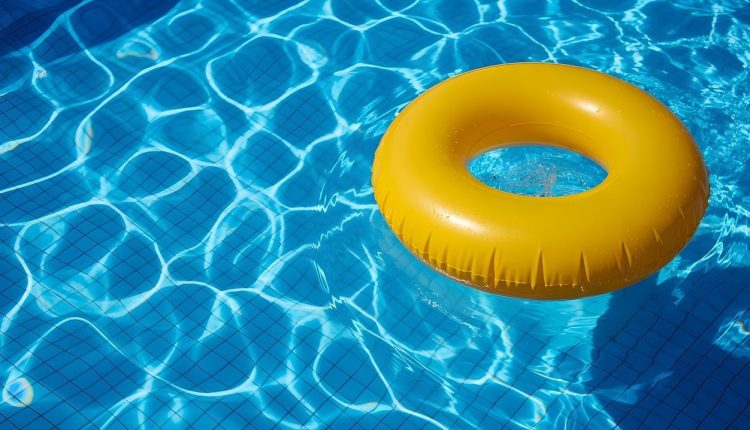Stay Safe in the Swimming Pool With These Expert Pump Up Tips For Inflatables
Key Takeaways
- Proper inflation is the number one safety factor for pool floats, with both overinflation and underinflation presenting different hazards
- AutoPump’s innovative solution helps maintain optimal inflation levels for safer pool experiences
- Regular inspection for damage should be performed before each use to prevent accidents
Why Proper Inflation Is Your #1 Pool Float Safety Factor
Pool floats turn ordinary swimming into relaxing aquatic experiences, but the safety of these inflatables depends on one critical factor that many overlook: proper inflation. The perfect pool day can quickly become dangerous when inflatables aren’t properly inflated. AutoPump has developed a that helps maintain optimal inflation levels for safer water experiences. Their innovative approach removes the guesswork from inflation, which is crucial since drowning remains a top cause of death in children.
Proper inflation directly impacts stability in the water. When a float is underinflated, it becomes difficult to balance on and may unexpectedly sink, potentially causing panic for non-swimmers. Conversely, overinflated floats become rigid and prone to tipping over or capsizing with the slightest shift in weight. That’s exactly why balanced inflation is the foundation of pool float safety.
Manufacturers specify inflation guidelines for a reason, after all – they’ve tested their products extensively to determine the optimal air pressure for performance and safety. Following these specifications ensures your inflatables perform as designed, providing the proper buoyancy and stability needed for safe enjoyment.
Understanding Inflatable Pool Float Risks
1. Common Inflation Mistakes That Lead to Accidents
The most frequent inflation mistakes happen when we use the eye test (or touch test) instead of measuring. Too often, pool users inflate by feel alone, pushing more air until the float seems firm enough. The result? Inaccuracy. That’s when problems happen on the water.
Another common mistake is using inappropriate inflation equipment. Mouth inflation may seem convenient, but it rarely achieves consistent pressure. Meanwhile, high-powered air compressors can damage valves and seams by forcing air in too quickly. Using the right inflation tool is just as important as achieving the right pressure level.
2. How Weather Affects Your Inflatable’s Pressure
Many pool users don’t realize that air pressure in inflatables fluctuates throughout the day due to temperature changes. This science is simple but crucial – air expands when heated and contracts when cooled. A perfectly inflated float in the morning may become dangerously overinflated by midday as the sun heats the air inside.
Temperature variations of just 20°F can significantly change internal pressure. When a float sits in direct sunlight, the dark-colored sections absorb heat particularly quickly, causing uneven expansion. This is why floats sometimes develop bulges in certain areas, compromising structural integrity and increasing accident risk.
3. Signs Your Pool Float Is Improperly Inflated
Recognizing improper inflation before entering the water can prevent accidents. An overinflated float feels excessively firm and may show stretched or shiny surfaces where the material is under stress. The seams might appear strained, and the float may feel unusually rigid when pressed.
Underinflation, meanwhile, has its own telltale signs. The float may feel soft and squishy with visible wrinkles or folds in the surface. When placed in water, an underinflated float may sit too low, allowing water to wash over the top. If you notice the float bending easily in the middle or sagging under weight, it needs more air before it can be used safely.
Essential Safety Practices for Pool Inflatables
1. Pre-Use Inflation Checklist
Before any pool day, run through this essential inflation checklist:
- Clean and dry the valve area before inflation to prevent air leaks
- Check the manufacturer’s guidelines for recommended pressure
- Inflate in a shaded area to get an accurate initial pressure
- Use a proper pump with pressure measurement capabilities
- Inflate gradually, checking firmness as you go
- Test the float’s stability on land before water use
- Ensure all chambers are evenly inflated for balanced buoyancy
This methodical approach takes just minutes but significantly reduces accident risks. Different float types might have specific inflation requirements, so always refer to the product instructions.
2. Using the Right Equipment for Inflation
The equipment you use to inflate your pool floats directly impacts safety. Manual hand pumps provide good control, but require effort and time. Electric pumps offer convenience and consistent pressure… but are best paired with pressure monitoring devices to prevent overinflation.
For optimal safety, consider pumps with automatic shutoff features that stop at preset pressure levels. These smart pumps eliminate guesswork and provide consistent results. Valve adaptors are equally important – using the wrong adaptor can damage valves or create leaks. Always keep a complete set of adaptors for different valve types, and store them with your pump for easy access.
Turn These Safety Tips Into Pool Day Habits
Creating a culture of safety around pool inflatables doesn’t happen automatically. Start each pool day with a quick safety briefing, especially with children or guests unfamiliar with water activities. Make proper inflation and equipment checks part of your standard setup routine, not an afterthought.
You could even consider creating a simple checklist that includes inflation checks, damage inspection, and supervision assignments. Laminate it and keep it with your pool supplies as a consistent reminder. Safety habits are most effective when they become automatic… so practice them consistently until they’re second nature.
As seasons change, review and adapt your safety protocols. Spring openings should include thorough inspections of all inflatables that have been stored over winter. Mid-summer heat waves require more frequent pressure checks throughout the day. By adding these practices to your regular pool routine, safety will become a part of your enjoyment, rather than taking away from it.
The extra minutes spent on proper inflation and safety measures fade in significance compared to the hours of worry-free enjoyment they enable. With the right practices, tools, and awareness, pool inflatables can remain what they’re meant to be: sources of fun, relaxation, and happy memories for seasons to come. AutoPump offers an inflation solution that helps maintain optimal safety for your pool day adventures.


Comments are closed.